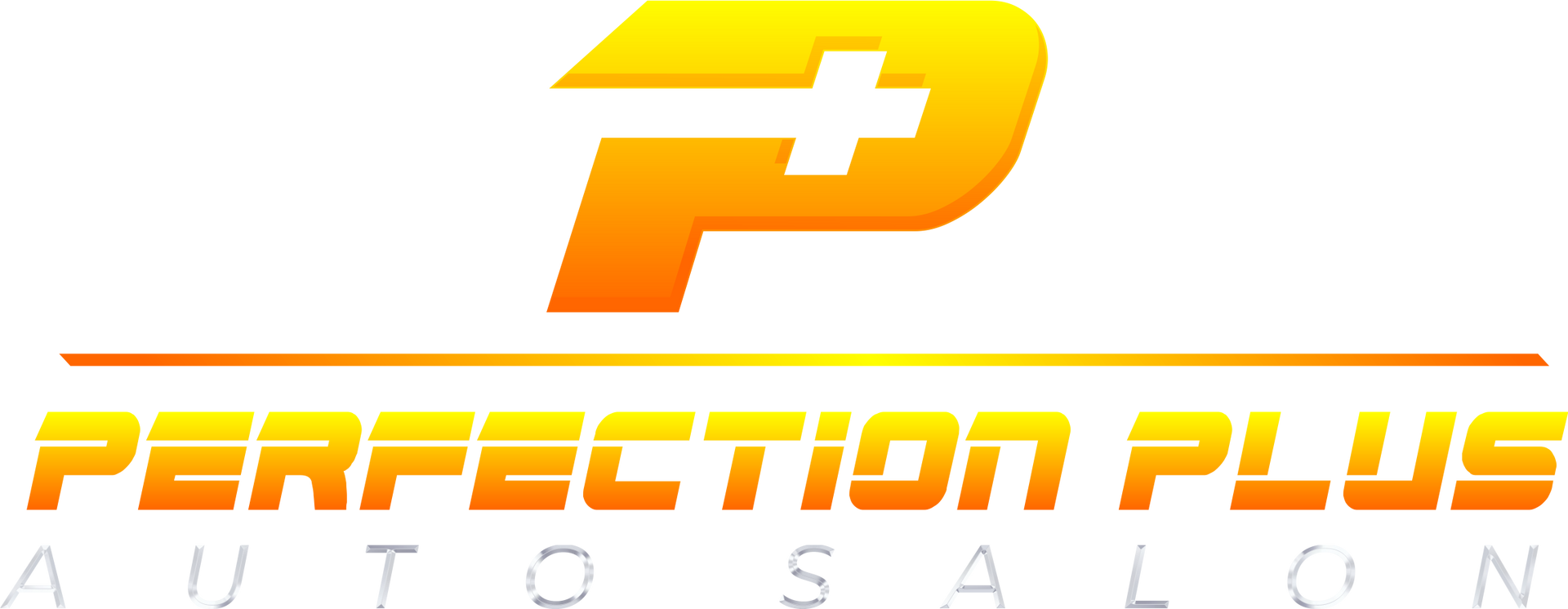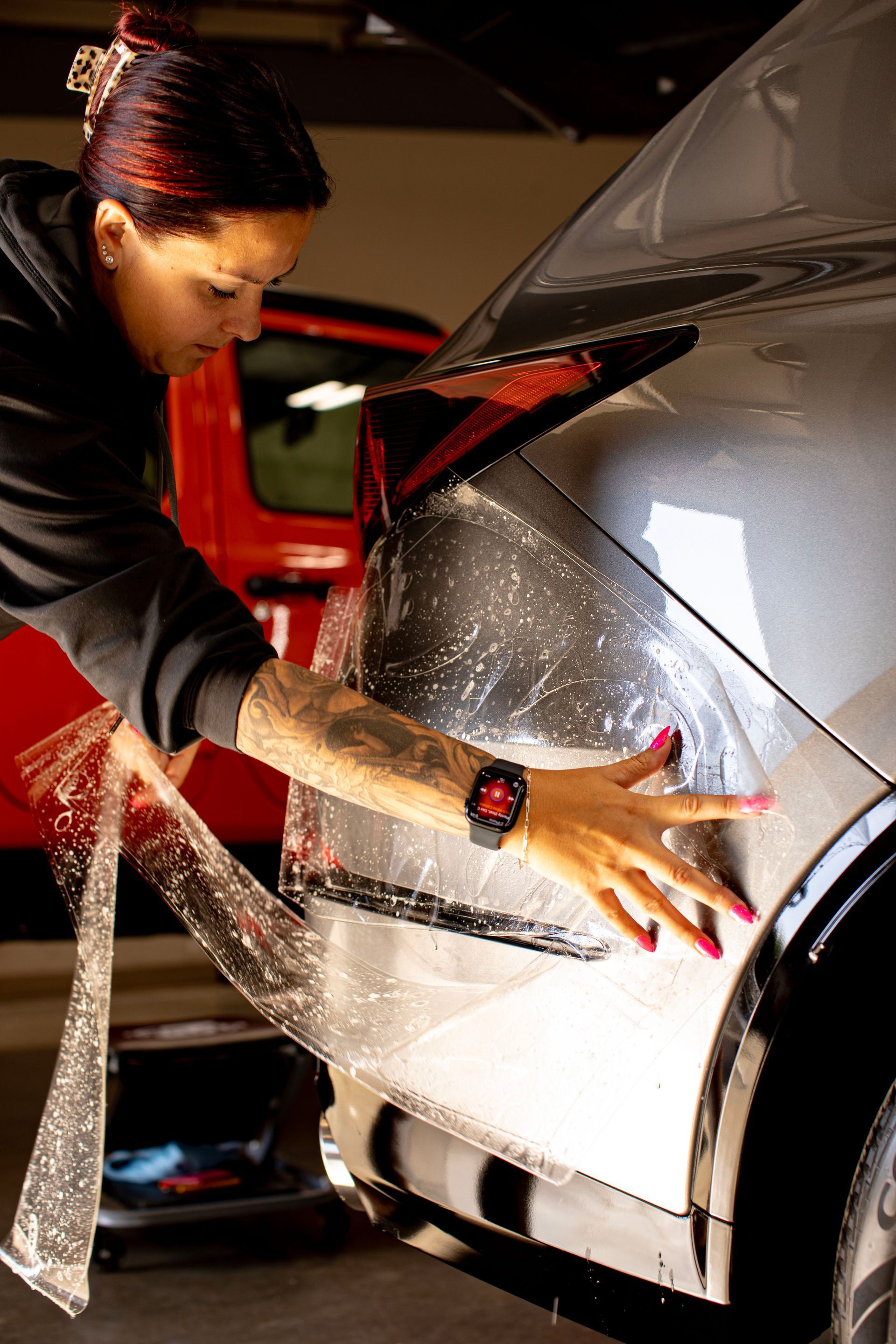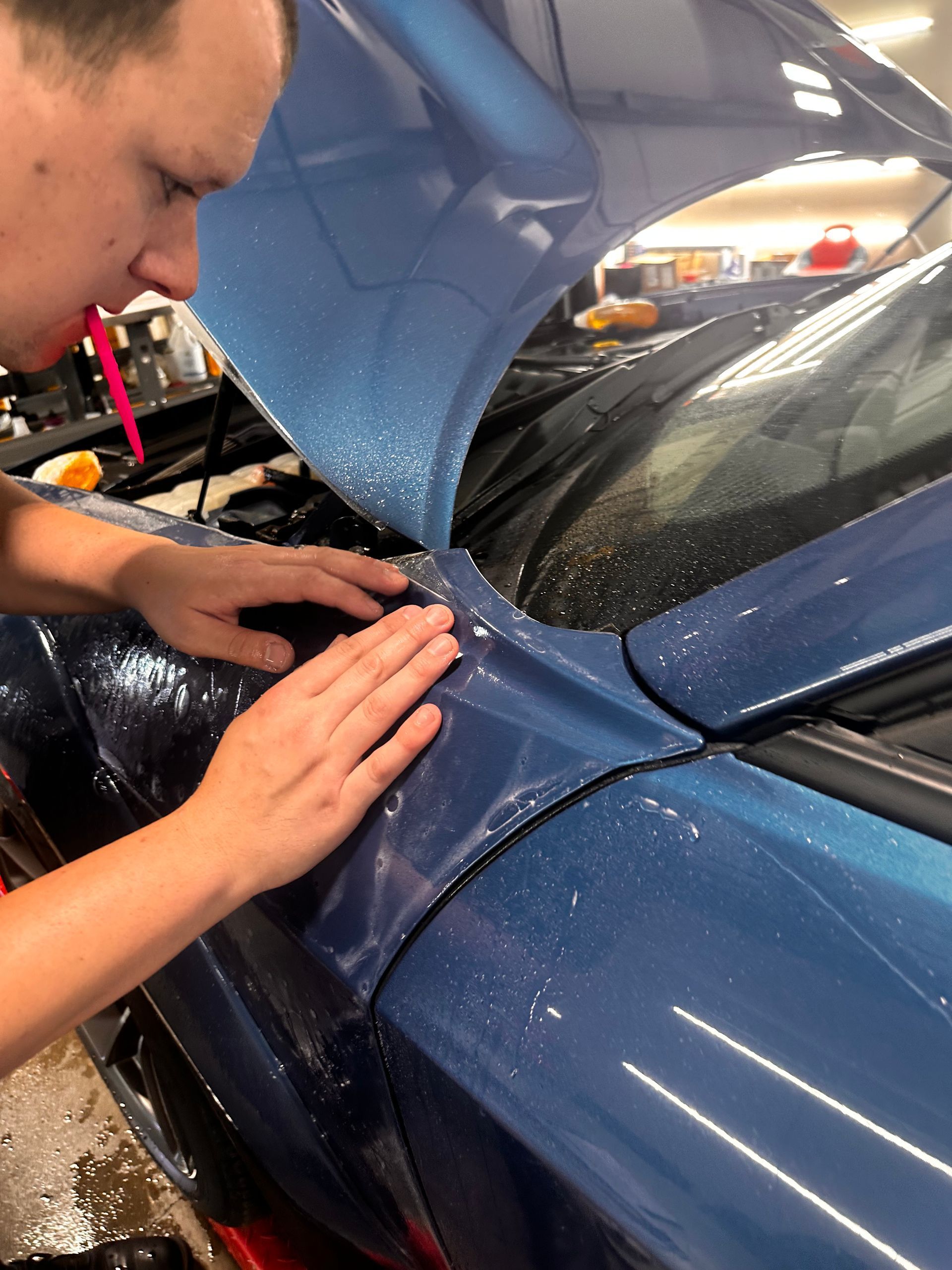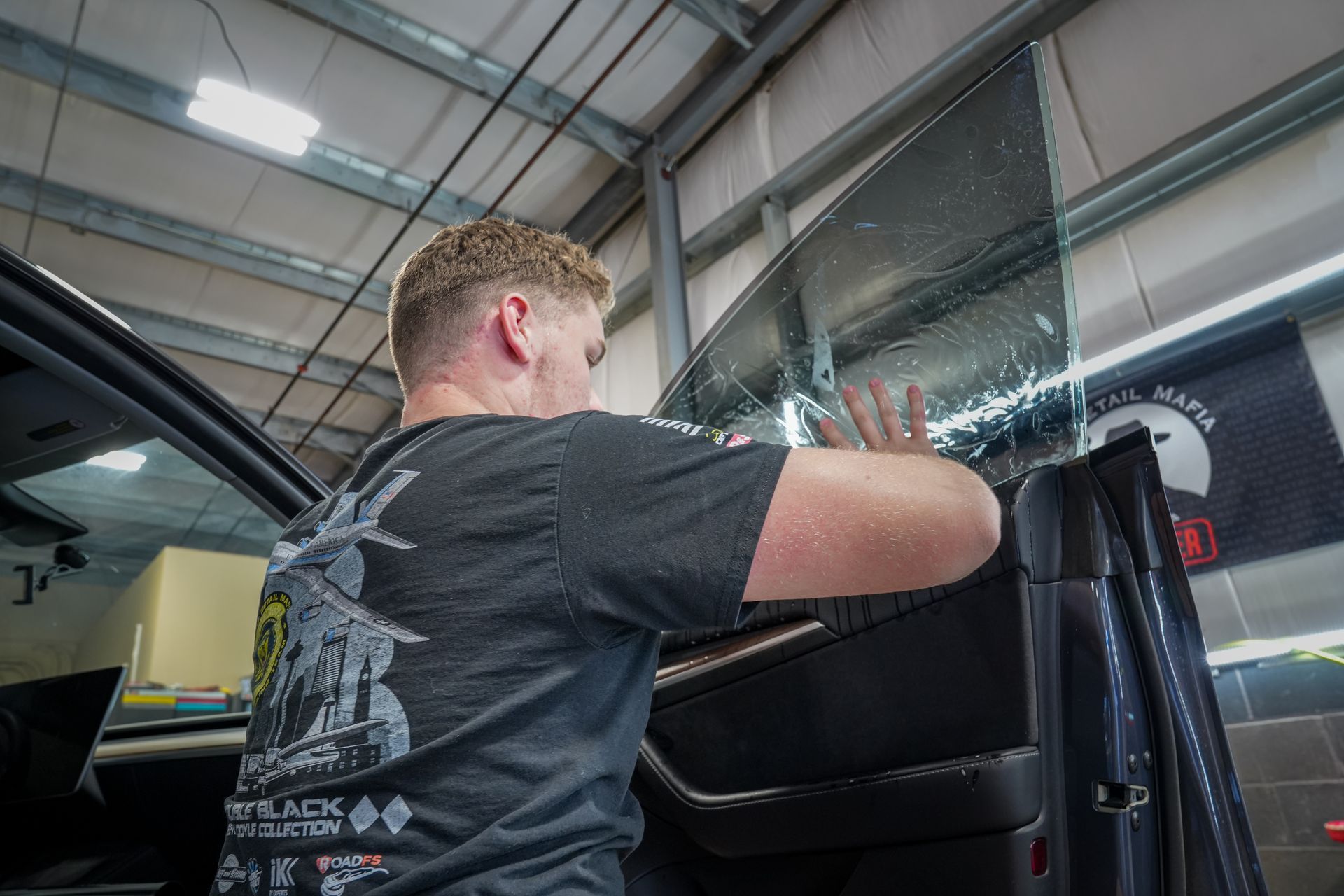Maintaining your vehicle’s showroom finish over time can be a significant challenge, especially with constant exposure to road debris, UV rays, and harsh weather conditions. Paint protection film offers a sophisticated and highly effective solution to this problem. This nearly invisible layer acts as a barrier, shielding your vehicle’s paint from everyday wear while preserving its original luster and color. Whether you're protecting a new purchase or looking to extend the life of your current car's finish, PPF provides both functional and aesthetic benefits.
Yes, paint protection film is often considered worth the investment, especially for vehicle owners looking to protect their paint from scratches, rock chips, and environmental damage. Its long-term benefits include maintaining the vehicle's aesthetic appeal and resale value, particularly for those planning to keep the car for an extended period or those frequently driving in harsh conditions.
Overview of Paint Protection Film
Paint protection film is a specialized product designed to protect your vehicle’s paintwork from the harsh realities of the road. Made from thermoplastic urethane, this clear film creates a robust barrier against common enemies like scratches, rock chips, and environmental contaminants. Consider PPF as an imperceptible protective layer for your vehicle, enabling you to preserve its flawless appearance while lowering your long-term repair expenses. One of the most impressive aspects of modern PPF is its thickness, typically ranging from 6 to 8 mils (0.006 to 0.008 inches). This thickness might sound minimal, but it plays a significant role in mitigating the wear and tear vehicles endure, particularly in regions with rough weather conditions or unpaved roads. Using PPF can reduce paint damage, drastically extending the lifespan of your vehicle's exterior.
Interestingly, the protection offered goes beyond simple physical barriers. PPF also serves as a UV filter, preventing harmful sun rays from fading your car's paint over time. This feature ensures that even with daily exposure to sunlight, your vehicle maintains its color brilliance much longer than it would without protection. Investing in PPF essentially enhances both the visual appeal and value retention of your automobile. Naturally, you might wonder about maintenance requirements. Fortunately, PPF is effortless to care for!
Key Advantages for Vehicles
When it comes to investing in PPF, several key benefits stand out. Firstly, rock chip protection is a significant advantage. The film acts as an invisible shield against road debris—particularly crucial for those who drive frequently on highways. Imagine cruising down the asphalt with confidence, knowing your vehicle’s surfaces are safeguarded against flying rocks and gravel that could cause costly repairs. In fact, PPF reduces the risk of paint damage from such impacts. For someone who “lives” on the road, this feature is not just a luxury; it's an essential investment in maintaining the car's value and appearance.
Another impressive aspect of PPF is its scratch resistance. Life happens, and minor scratches are nearly inevitable. However, with PPF applied, these surface imperfections can be significantly reduced. The film’s structure helps to absorb impacts, which means your car will maintain that fresh-from-the-showroom look far longer than vehicles without such protection. The feature is particularly beneficial for individuals living in urban environments where parking can be a hassle, often leading to accidental scrapes from neighboring vehicles. Cleaning a car traditionally requires time and effort; however, with PPF, there’s a major upgrade in terms of ease of maintenance. One standout feature is its ability to facilitate ease of maintenance. The hydrophobic nature of PPF makes it challenging for dirt and bugs to stick, resulting in quicker washes and less time spent cleaning overall. Imagine the long drives during bug season, which are often challenging to maintain cleanliness. With PPF, a simple rinse may suffice to clear away the remnants of your journey.
Furthermore, the protective layer offers robust UV protection, blocking harmful rays that can lead to paint oxidation and fading. Over time, neglecting UV exposure can lead to a significant degradation of your vehicle’s exterior finish. With PPF standing guard against these damaging rays, you’ll find that your car retains its vibrant color much longer than otherwise possible; this helps with aesthetics and supports resale value. There's an intriguing feature about PPF that often goes underappreciated: its self-healing properties. Utilizing innovative elastomeric polymers, some advanced brands of PPF possess self-healing capabilities for minor scratches. Essentially, if you accidentally graze your car against something rough—or even if you get a small scratch—warmed by the sun or heat from washing, the film can restore itself back to smooth perfection after a short while. This means that light imperfections fade away as time goes on without needing any special treatment from you!
What to Know Before Investing in PPF
Choosing paint protection film is a smart step toward preserving your vehicle’s finish, and understanding a few key details can help you maximize its benefits. While the upfront cost may be higher—often starting around $1,300 for full front-end coverage—many vehicle owners find the investment pays off by reducing long-term repair and repainting expenses. For optimal results, professional installation is highly recommended. Expert technicians ensure a precise application, delivering a flawless finish and lasting protection that DIY kits often can’t match.
Today’s premium PPF products are engineered to resist yellowing and UV damage, offering enhanced clarity and protection over time. Choosing a high-quality film with a reliable warranty adds peace of mind and helps maintain your car’s visual appeal. Maintenance is simple, too—PPF repels dirt and road grime, making routine washes easier and less frequent. With the right care, your film can last between 5 and 10 years, depending on environmental conditions and driving habits. By taking these factors into account, you’re setting your vehicle up for long-term success.
Financial Implications and Costs
On average, professional installation of PPF can range from $600 for smaller areas like the hood and fenders to over $8,000 for full vehicle coverage. Factors like vehicle type, surface complexity, and PPF quality affect these prices. For instance, larger vehicles or SUVs typically incur higher costs simply due to their additional surface area needing coverage. Conversely, a compact car will naturally cost less owing to its size.
The cost of PPF isn't merely an upfront expense; it's intertwined with your vehicle's future care and maintenance. Many car owners see this installation as an investment in their vehicle's longevity and appearance, not just a purchase. Following this logic, while you may be looking at $1,100 to $2,200 on average for good-quality PPF application, consider that you might be saving thousands of dollars in touch-ups or repairs later down the line.
Cost vs. Longevity
While the initial cost might seem steep, consider it an investment in the integrity of your vehicle’s exterior. PPF can significantly extend the life of your car's paint by acting as a tough barrier against environmental wear — this means fewer trips back to the auto body shop and lower repainting costs for you in the long run. Think about it: if you could prevent paint damage that might otherwise cost $3,500 to repair by spending $2,000 upfront on protective film, wouldn’t that make sense? The reality is that for those planning on keeping their vehicle long-term or showing it at car shows, investing in PPF becomes even more reasonable.
It’s also worth mentioning that certain high-quality films come with manufacturer warranties that can last from 5 to 10 years. This warranty protects your investment by covering peeling or discoloration issues—adding another layer of assurance that you're making a sound financial choice.
Comparing to Other Protective Options
When it comes to protecting your vehicle’s paint, you might also be considering traditional wax and sealant applications. These products are familiar to many car owners. A significant advantage of using wax or sealant is their cost-effectiveness; they are typically less expensive upfront compared to paint protection film. However, this lower price point comes with a tradeoff: wax requires reapplication every few months to keep the paint adequately protected from elements like UV rays, bird droppings, and road debris.
We have ceramic coatings, which offer a more robust form of protection than traditional wax. These coatings create a rigid, glass-like finish that adheres directly to the paint surface. The durability of ceramic coatings is often highlighted by users who appreciate their hydrophobic properties that repel water and make cleaning easier. Although ceramic coatings require less maintenance—typically lasting two to five years before needing reapplication—they come at a steeper initial investment of around $1,000 to $3,000 for professional application. In comparison to PPF, ceramic coatings excel in gloss enhancement and provide decent protection against environmental contaminants. However, they don’t offer the same level of impact resistance that PPF does against rock chips and scratches.
This understanding leads us back to considering the long-term implications: if you're planning to keep your vehicle for several years or more, investing in PPF may save you money on potential repainting costs later down the line. Choosing between PPF, wax, or ceramic coatings hinges on your individual needs as a vehicle owner. Whether you prioritize ease of maintenance or maximum durability can influence which option aligns best with your lifestyle and budget. With these considerations in mind, it's essential to hear directly from those who have utilized these protective options firsthand—gaining insights into their experiences can further inform your decision.
Making the Decision for Your Car
Deciding whether paint protection film is the right fit for your car involves weighing several key factors that align with your vehicle’s value, usage, and your long-term goals. While PPF offers exceptional benefits in preserving appearance and preventing damage, its true value depends on how—and how often—you drive, as well as your priorities for maintenance and resale. Understanding your specific needs is the first step in determining whether this investment will deliver the protection and peace of mind you're looking for.
- Vehicle Value and Usage: If you're the owner of a higher-end or luxury vehicle, applying PPF can be particularly beneficial. Think about it: these cars often carry higher price tags, meaning any potential damage could significantly diminish their resale value. Additionally, for drivers who frequently traverse harsh terrains or spend substantial time on highways, where chips from rocks are common, the protective qualities of PPF become even more vital. However, if you're anticipating selling your vehicle in the near future, the return on investment may not justify the cost; it's essential to assess whether you'll benefit from the protection before making that decision.
- Longevity and Aesthetics: For many car enthusiasts or individuals who simply take pride in their vehicle's appearance, preserving its look over time is crucial. PPF serves as an invisible barrier against road debris, UV rays, and other environmental hazards that can lead to fading or discoloration. If keeping your car in pristine condition for years is important to you, then investing in PPF is likely justified. While alternatives such as carnauba wax offer some degree of protection, they fall short in comparison to what PPF offers. Cars with PPF installed have been shown to maintain their aesthetic appeal much longer than those without it, ultimately elevating not just their appearance but also their resale value down the line.
Still unsure? Consult our experts at Perfection Plus Auto Detailing to explore your specific needs and assess how PPF aligns with them. Our experienced team will ensure maximum efficacy and longevity from your investment by providing professional installation tailored to your vehicle type. Whether you're leaning toward a full wrap or just focusing on high-impact areas like the hood and bumpers, professional advice can make a significant difference in your overall satisfaction. Investing in paint protection film is not just about immediate benefits; it's a strategic decision that can save you from costly repairs and preserve your car's beauty for years to come.
Exceptional PPF Services in Culver, OR
At Perfection Plus Auto Salon in Culver, OR, our
premium paint protection film services are designed to keep your vehicle looking its best through every season and every adventure. Whether you're navigating city streets or country roads, our expertly applied PPF acts as an invisible shield against rock chips, road debris, and environmental wear—preserving your car’s finish and value. With precision installation and top-tier materials, we deliver long-term protection that blends seamlessly with your vehicle’s style.
Schedule your PPF service today
and drive with confidence, knowing your paint is protected where it matters most.









